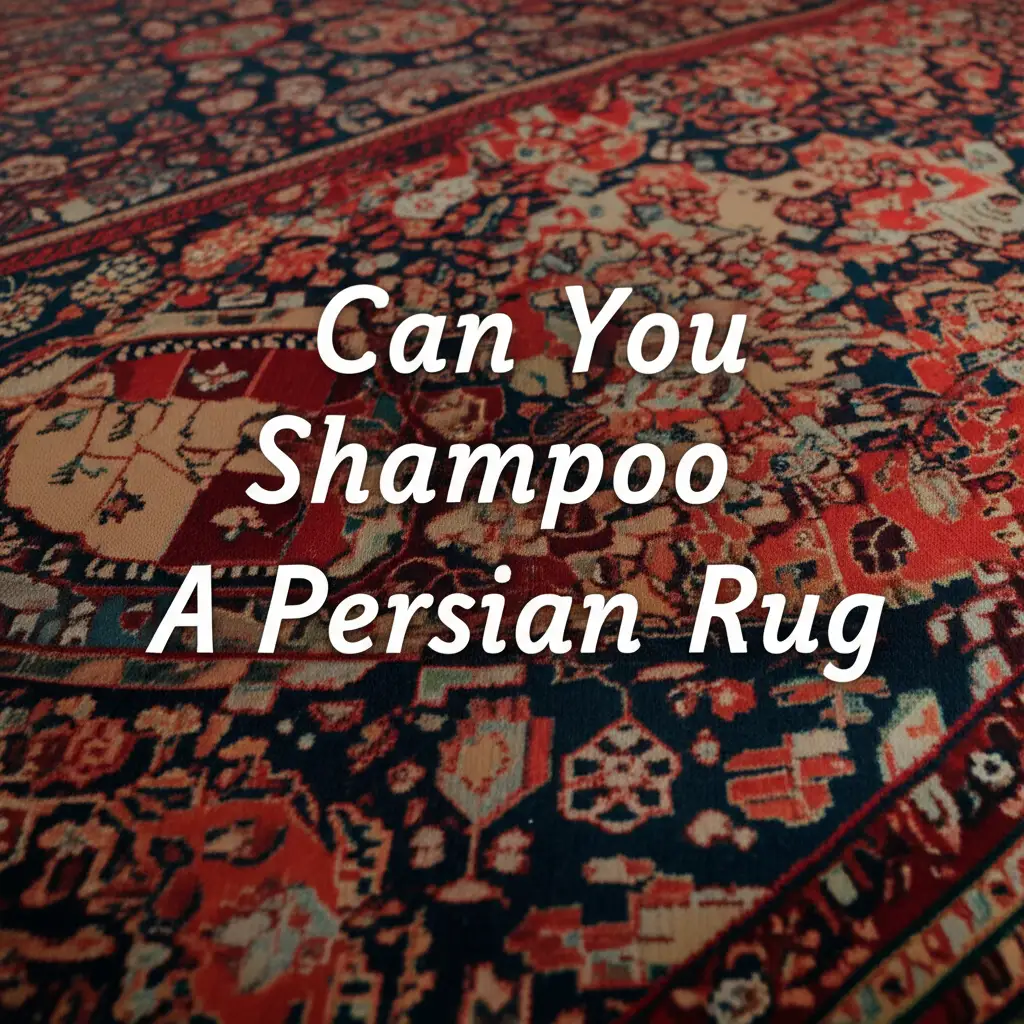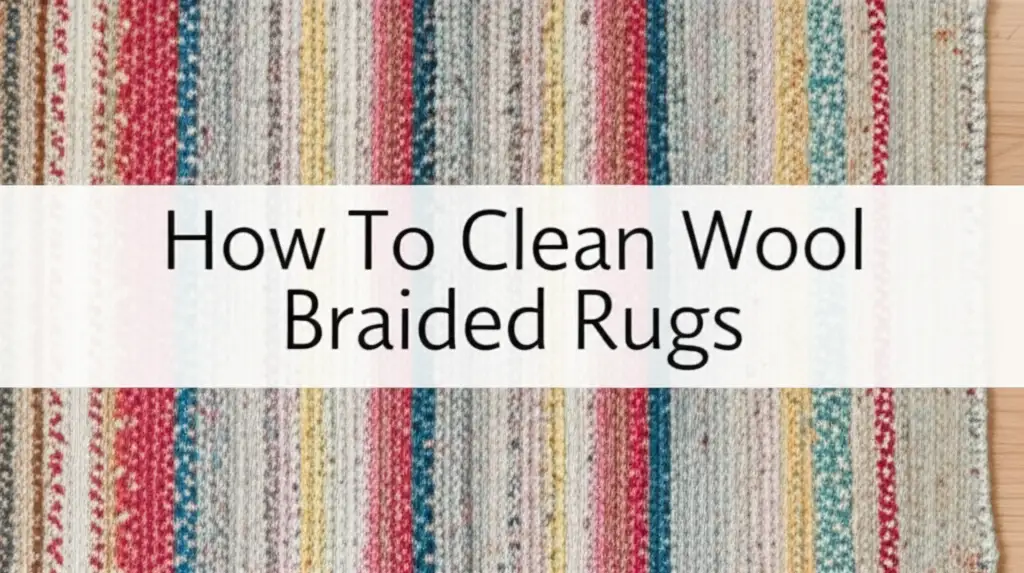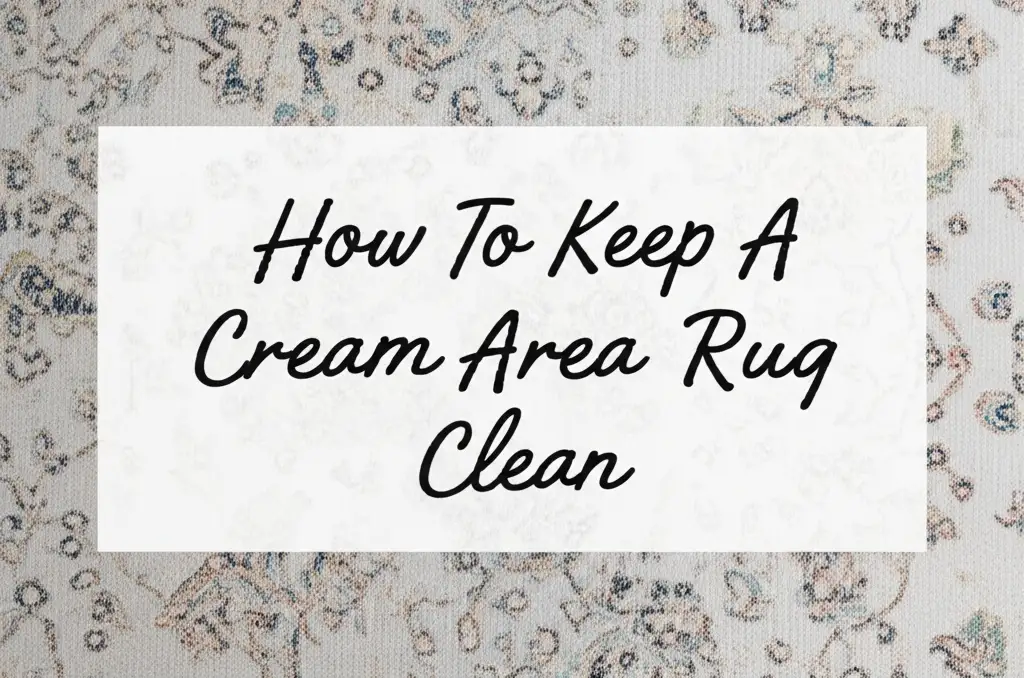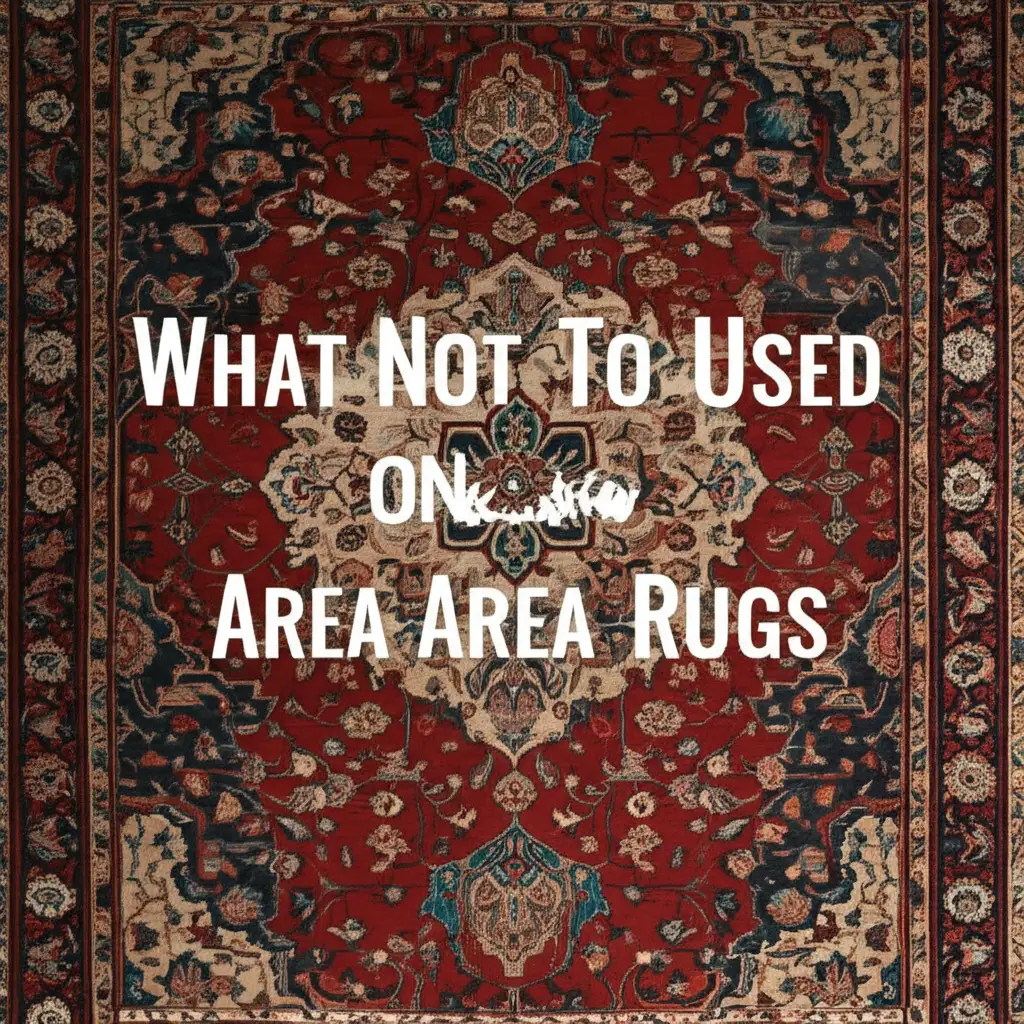· Liora Benning · Rug Care · 14 min read
Can You Shampoo A Persian Rug

Can You Shampoo A Persian Rug? Understanding Safe Cleaning Practices
Persian rugs are true works of art. They bring warmth and beauty to any room. Many people wonder about the best way to keep these valuable pieces clean. A common question I hear is, “Can you shampoo a Persian rug?” It is a good question to ask. The answer is not a simple yes or no. These rugs need specific care due to their materials and construction. Using the wrong cleaning method can cause serious damage. This guide helps you understand how to care for your Persian rug. We will explore safe cleaning options and methods to protect your investment.
Takeaway
- Avoid traditional shampooing methods for Persian rugs. They can cause damage.
- Persian rugs are often made of delicate wool or silk with natural dyes.
- Spot clean small spills immediately with gentle, neutral cleaners.
- Regular vacuuming with proper tools removes loose dirt.
- Professionals use specialized techniques for deep cleaning Persian rugs.
Direct Answer
You should not shampoo a Persian rug using standard carpet shampooers or harsh chemicals. Traditional shampooing methods can damage delicate fibers, cause dyes to bleed, and leave harmful residues. Persian rugs require specialized, gentle cleaning techniques, often involving hand washing or professional care to protect their value and beauty.
Understanding Your Persian Rug’s Unique Nature
Persian rugs are special. Artisans make them by hand. They use specific materials and techniques. Most Persian rugs feature wool fibers. Some very fine rugs contain silk. The wool often comes from sheep living in specific regions. This wool has natural lanolin, which offers some stain resistance. However, it is also highly absorbent. Silk rugs are even more delicate. They shimmer and feel very soft. Their fibers are fine and prone to damage.
The dyes in Persian rugs are another important factor. Many older or traditional rugs use natural vegetable dyes. These dyes create beautiful, rich colors. However, natural dyes can bleed or fade if exposed to harsh chemicals or excessive water. Synthetic dyes are also present in some rugs. Even these modern dyes can react negatively to strong cleaners. The hand-knotted construction also creates unique challenges. Dirt settles deep into the rug’s foundation. This structure makes cleaning difficult without proper methods. You can learn more about these characteristics by exploring how do you know if a rug is Persian.
Every knot in a Persian rug is placed by hand. This makes them durable, but also valuable. Their value depends on their age, design, and condition. Using the wrong cleaning product risks permanent damage. This damage reduces the rug’s beauty and value. Proper care maintains the rug’s integrity. It ensures the rug lasts for generations. Understanding the rug’s materials helps you choose the right cleaning approach.
The Risks of Traditional Shampooing for Delicate Fibers
Shampooing a Persian rug with a standard carpet cleaner or a machine is a bad idea. These machines inject water and detergent deep into the rug. They then attempt to extract it. This process can be very harmful to Persian rugs. The high water pressure can damage the delicate knots and weave. It can loosen the foundation of the rug. This leads to distortion or unraveling over time. Regular carpet shampoos contain harsh chemicals. These chemicals strip the natural oils from wool fibers. This makes the wool dry and brittle. It also removes the fiber’s natural luster.
Color bleeding is another major concern. The detergents in common shampoos can cause natural dyes to run. This mixes colors and permanently stains parts of the rug. Imagine a vibrant red bleeding into a light ivory area. This damage is irreversible. Leaving detergent residue in the rug is also common. Machine shampooers often do not extract all the cleaning solution. This residue attracts dirt faster. It makes the rug get dirty again very quickly. This creates a cycle of needing more frequent cleaning.
Improper drying is another risk. After a machine shampoo, a Persian rug can stay wet for too long. If a rug remains damp, it can develop mold or mildew. This leads to unpleasant odors and can rot the rug’s foundation. It also creates a breeding ground for bacteria. Traditional shampooers are designed for synthetic carpets, not hand-knotted wool or silk. These machines are too aggressive for fine rugs. They do not consider the specific needs of natural fibers and dyes. Learn more about general area rug cleaning, and why caution is advised for delicate rugs, by reading can you use a shampooer on an area rug. This insight helps you avoid mistakes with your cherished Persian rug.
Gentle Home Cleaning Strategies for Minor Issues
Maintaining your Persian rug at home involves gentle, consistent practices. Regular vacuuming is crucial for removing loose dirt and dust. Use a vacuum cleaner with a brush attachment or without a beater bar. A beater bar can damage the rug’s fibers and foundation. Vacuum the rug in the direction of the pile, not against it. This helps protect the fibers. Vacuum the rug’s front and back. The back allows vibrations to loosen deep-seated dirt. You can also hang the rug and gently beat it with a broom for a deeper dust removal.
Spot cleaning is essential for spills. Act quickly when a spill occurs. Blot the area with a clean white cloth. Do not rub, as rubbing pushes the spill deeper. Use a small amount of distilled water for most spills. For tougher spots, a mild, pH-neutral wool cleaner may be necessary. Test any cleaning solution on an inconspicuous area first. This checks for colorfastness. You want to ensure the cleaner does not cause dyes to bleed. Apply the cleaner to a cloth, then blot the stain. Never apply cleaners directly to the rug.
Dusting is also important. Use a soft brush or broom to sweep the rug’s surface gently. This removes surface dust and debris that vacuums might miss. For a more thorough dusting, take the rug outdoors periodically. Lay it pile-down on a clean surface. Gently beat the back of the rug. This releases embedded dirt. Remember to keep the rug dry. Excess moisture promotes mold growth. Always ensure the rug dries completely after any cleaning. These steps help keep your Persian rug looking good between professional cleanings. For general tips, see how to keep a cream area rug clean. Also, for specific hand-cleaning advice, refer to how to clean a rug by hand.
Targeting Stains: Safe Spot Cleaning for Persian Rugs
Stains on Persian rugs need careful attention. The type of stain determines the best approach. Act immediately for the best results. For liquid spills like water or juice, blot gently with a clean white cloth. Press firmly to absorb as much liquid as possible. Avoid rubbing, as this spreads the stain and damages fibers. If the stain remains, use a small amount of distilled water. Apply it to a fresh cloth and continue blotting. This dilutes and lifts the stain.
For oil-based stains, such as grease or cosmetics, first scrape off any excess material. Then, apply a small amount of a solvent-based spot cleaner designed for wool or silk rugs. Always test the cleaner on an hidden area first. Apply the cleaner to a clean cloth, not directly to the rug. Blot the stain from the outside in. Change cloths frequently to avoid spreading the stain. Repeat until the stain lifts. For specific advice on silk, consult how to get stains out of silk rug.
Pet urine stains require immediate and thorough action. Urine can cause permanent damage and odor. Blot up as much urine as possible. Use paper towels or old cloths. Then, mix equal parts white vinegar and water. Apply this solution to a clean cloth and blot the stained area. The vinegar neutralizes the odor and helps with discoloration. Rinse by blotting with clean water. Finally, dry the area completely using a fan or by gently pressing with dry towels. Do not use a heat source, as it can set the stain. For comprehensive guidance on this specific problem, review how to get urine stains out of a wool rug. Always ensure the rug dries fully to prevent mildew.
When to Seek Professional Persian Rug Cleaning Services
Professional cleaning is essential for your Persian rug’s longevity and beauty. Everyday vacuuming and spot cleaning help. But over time, dirt settles deep into the rug’s foundation. This trapped dirt causes wear on the fibers. It makes the rug look dull. Experts recommend a professional cleaning every 3-5 years. This frequency depends on foot traffic and rug location. A rug in a busy entryway needs cleaning more often. A rug in a guest room needs less frequent cleaning. You should also consider professional cleaning after any major spill or if you notice an persistent odor.
Professional cleaners understand the unique structure of Persian rugs. They know how to identify different fibers and dyes. They use specialized cleaning methods that are safe for handmade rugs. These methods often involve gentle washing techniques. Cleaners use neutral pH solutions. They hand wash the rug or use equipment designed for delicate textiles. They also have proper drying facilities. This ensures the rug dries completely and evenly. Proper drying prevents mold, mildew, and fiber damage. Professional cleaners also offer repairs. They can fix fringes, rebind edges, and restore damaged areas.
Choosing the right professional is vital. Look for cleaners with specific experience in Persian and oriental rugs. Ask about their cleaning process. Inquire about their drying methods. Check for certifications or specialized training. A reputable cleaner will inspect your rug thoroughly. They will discuss any concerns and explain the cleaning plan. They protect your valuable investment. Using a local service, like one in where to get Persian rugs cleaned in Fort Worth TX, can often provide a more personalized service. Trusting your rug to a specialist extends its life. It also preserves its vibrant colors and intricate patterns.
The Art of Drying and Post-Cleaning Care for Persian Rugs
Proper drying is a critical step after any cleaning. Whether you spot clean a small area or a professional cleans the entire rug, thorough drying prevents many problems. If a Persian rug stays wet for too long, several issues can arise. Mold and mildew are common concerns. They cause unpleasant odors. They also weaken the rug’s fibers and foundation. This can lead to permanent damage. Color bleeding can also occur if dyes remain wet for extended periods. The colors can migrate, causing unsightly streaks or dullness.
After a spot clean, blot the area dry with clean towels. Press down firmly to absorb moisture. Do not rub. You can place a stack of heavy books on the towels to help absorb more water. For quicker drying, use a fan. Direct the airflow across the damp area. Ensure good air circulation in the room. Never use direct heat, like a hairdryer or space heater. High heat can shrink wool fibers. It can also damage the rug’s foundation. This can make the rug stiff or brittle. It can also set certain stains permanently.
Professional cleaners have controlled drying rooms. These rooms maintain specific temperature and humidity levels. This environment allows rugs to dry slowly and evenly. They often hang rugs vertically. This ensures air circulates around all sides. Proper drying restores the rug’s pile and softness. After drying, gently brush the pile with a soft brush. This helps restore the rug’s natural sheen. It also helps remove any lingering stiffness from the cleaning process. This careful post-cleaning care is as important as the cleaning itself. It maintains the rug’s beauty and extends its life.
Preventative Measures and Long-Term Preservation of Your Investment
Taking preventative steps protects your Persian rug. These measures reduce the need for frequent deep cleaning. They also extend the rug’s life. First, use a good rug pad. A rug pad cushions the rug. It reduces wear from foot traffic. It also prevents the rug from slipping. This protects both your rug and your family. Choose a pad made for hard floors if your rug is on wood or tile. Choose one for carpets if your rug is on top of another carpet.
Rotate your rug regularly. This helps wear evenly. Sunlight can fade rug colors over time. Rotate the rug every 6-12 months. This exposes different parts to sunlight. It also helps distribute foot traffic. If a rug is in a sunny spot, consider using UV-blocking window films. These films reduce fading. They protect the rug’s vibrant dyes. Avoid placing heavy furniture on your rug for long periods. The weight can crush the pile. This creates permanent indentations. If you must place furniture, use furniture coasters. Move the furniture slightly every few months. This allows the pile to recover.
Protect your rug from pests like moths. Moths eat wool fibers. They cause holes and damage. Vacuum regularly, especially under furniture. This disturbs moth eggs and larvae. Store rugs properly if not in use. Clean the rug thoroughly before storage. Roll it tightly and wrap it in breathable fabric. Cotton sheets work well. Avoid plastic. Plastic traps moisture. This leads to mold. Store the rug in a cool, dry place. These preventative steps save money on repairs. They keep your Persian rug beautiful for many years.
FAQ Section
Can I use a steam cleaner on my Persian rug?
No, you should not use a steam cleaner on a Persian rug. Steam cleaners use high heat and moisture. This can damage delicate wool or silk fibers. It can also cause dyes to bleed. The high heat can also set stains permanently. It is better to use dry cleaning methods or specialized rug washing techniques.
How often should I vacuum my Persian rug?
Vacuum your Persian rug weekly in high-traffic areas. For low-traffic areas, vacuum every two weeks. Use a vacuum with a brush attachment or without a beater bar. This prevents damage to the rug’s pile. Regular vacuuming removes surface dirt before it settles deep into the fibers.
What should I do immediately if I spill something on my Persian rug?
Act fast. Blot the spill immediately with a clean, white cloth or paper towel. Apply firm pressure. Do not rub the stain. Rubbing pushes the liquid deeper into the fibers. For most spills, blot with a small amount of distilled water. This helps lift the remaining liquid.
Can I use baking soda to clean my Persian rug?
You can use baking soda for minor odor neutralization. Sprinkle a small amount over the rug. Let it sit for 15-30 minutes. Then vacuum it thoroughly. Avoid using baking soda for deep cleaning or stain removal. It can be hard to remove completely and may leave residue.
How can I tell if my Persian rug has colorfast dyes?
Test dyes in an inconspicuous area. Dampen a clean white cloth with a small amount of distilled water. Gently rub the cloth on a small part of the rug, focusing on a dark color. If color transfers to the cloth, the dyes are not colorfast. This means water or cleaning solutions may cause bleeding.
Conclusion
Caring for your Persian rug is an investment in its beauty and longevity. We have explored the important question, “Can you shampoo a Persian rug?” The clear answer is that traditional shampooing is not safe for these valuable pieces. Their delicate wool or silk fibers, along with natural dyes, require specific care. Using harsh chemicals or excessive water can cause irreversible damage. This includes color bleeding, fiber deterioration, and mold growth.
Instead of harsh shampooing, focus on gentle home care. Regular vacuuming, quick spot cleaning, and careful dust removal are key. Remember to use only mild, pH-neutral cleaners designed for wool or silk. Always test any product in an hidden area first. For deep cleaning, always trust experienced professionals. They use specialized techniques and have the right equipment to protect your rug. These experts understand the nuances of Persian rug cleaning. They ensure your rug receives the safest and most effective treatment.
Your Persian rug is more than a floor covering. It is a piece of art. It carries history and culture. By following these guidelines, you preserve its intricate design and vibrant colors. Proper care ensures your Persian rug remains a cherished part of your home for many generations. Invest in its care today. Enjoy its beauty for years to come.
- Persian rug care
- rug cleaning
- wool rug cleaning
- handmade rug care
- professional rug cleaning
- delicate rug care
- rug maintenance





